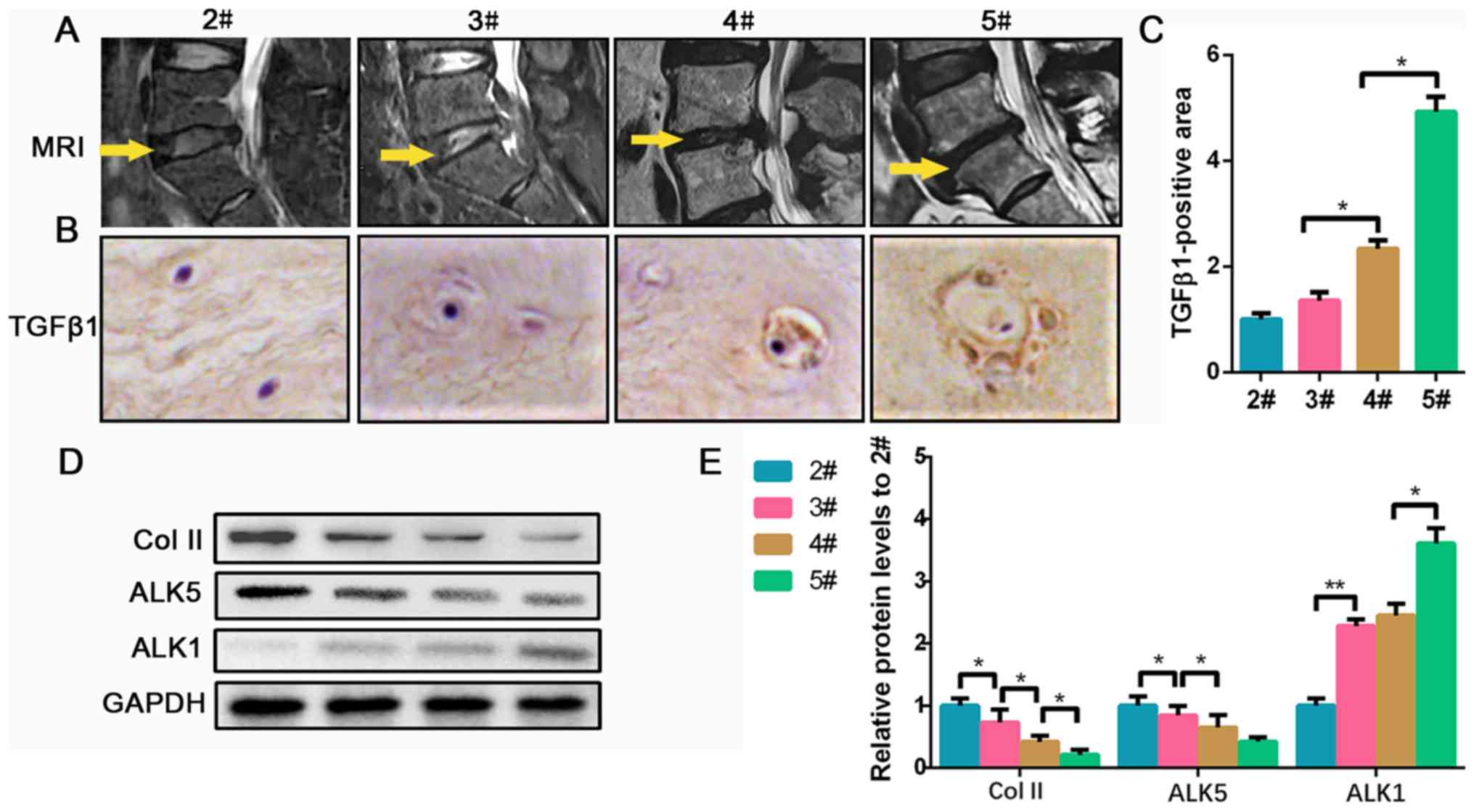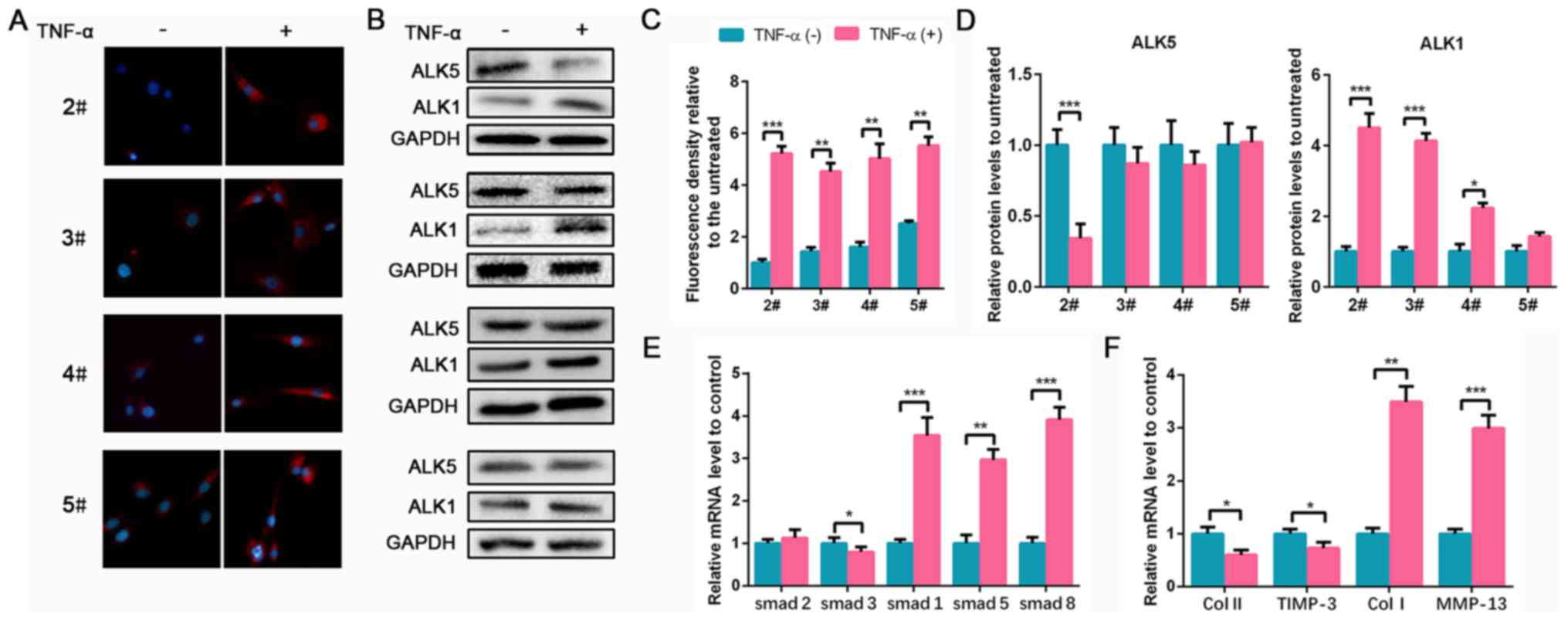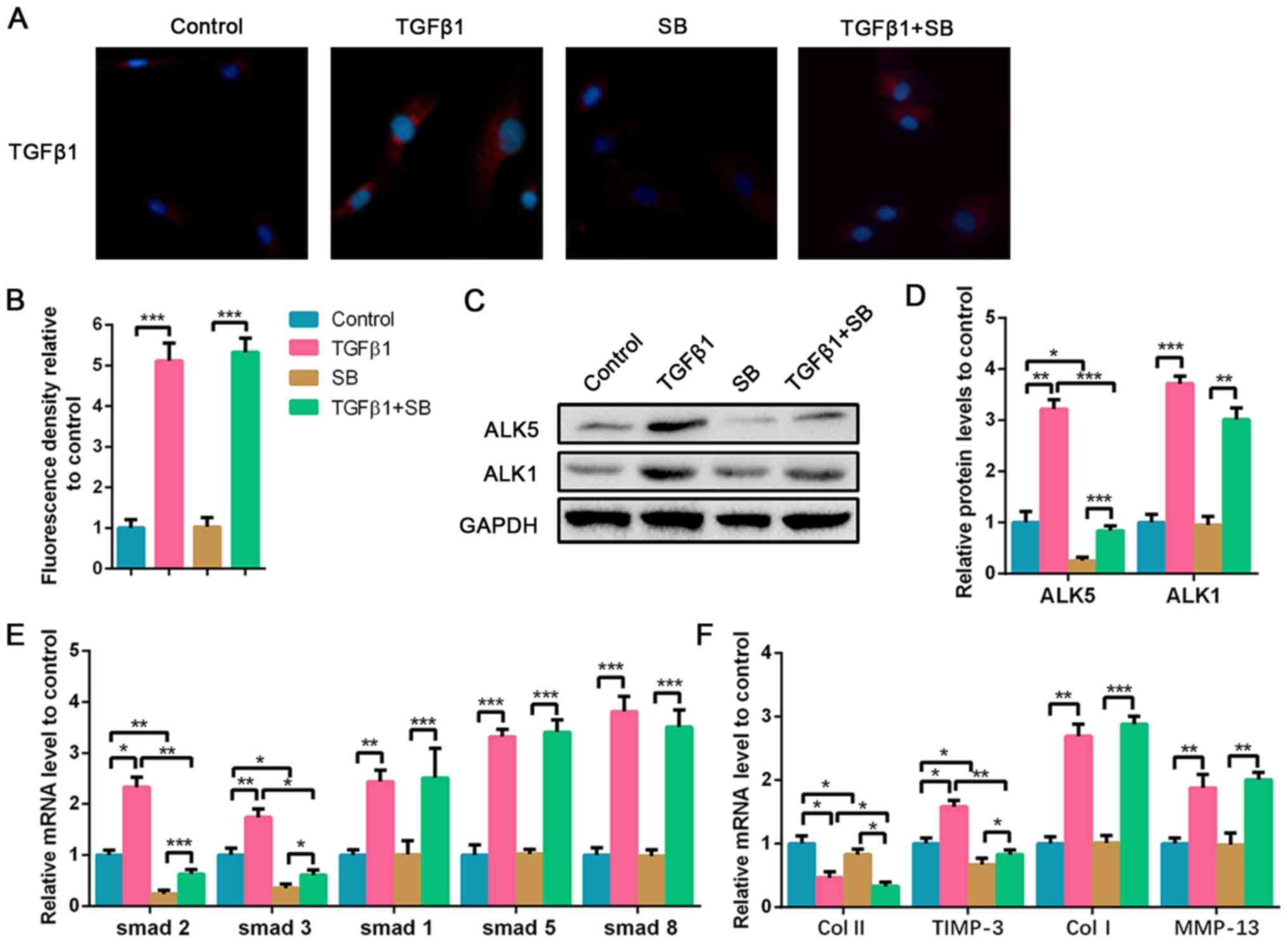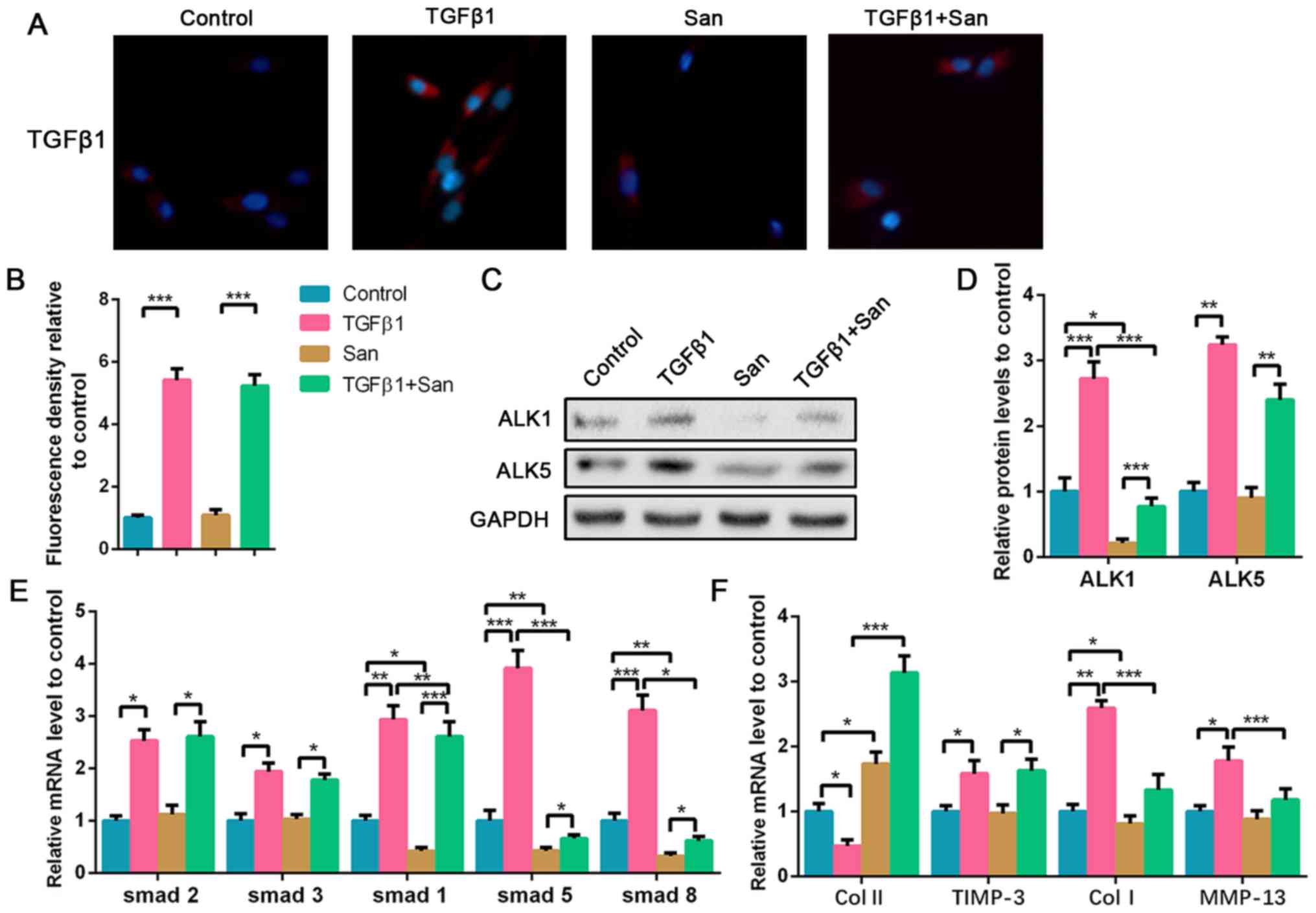|
1
|
Zhao CQ, Wang LM, Jiang LS and Dai LY: The
cell biology of intervertebral disc aging and degeneration. Ageing
Res Rev. 6:247–261. 2007.PubMed/NCBI View Article : Google Scholar
|
|
2
|
Zhou TY, Wu YG, Zhang YZ, Bao YW and Zhao
Y: SIRT3 retards intervertebral disc degeneration by anti-oxidative
stress by activating the SIRT3/FOXO3/SOD2 signaling pathway. Eur
Rev Med Pharmacol Sci. 23:9180–9188. 2019.PubMed/NCBI View Article : Google Scholar
|
|
3
|
Sampara P, Banala RR, Vemuri SK, Av GR and
Gpv S: Understanding the molecular biology of intervertebral disc
degeneration and potential gene therapy strategies for
regeneration: A review. Gene Ther. 25:67–82. 2018.PubMed/NCBI View Article : Google Scholar
|
|
4
|
Vo NV, Hartman RA, Patil PR, Risbud MV,
Kletsas D, Iatridis JC, Hoyland JA, Le Maitre CL, Sowa GA and Kang
JD: Molecular mechanisms of biological aging in intervertebral
discs. J Orthop Res. 34:1289–1306. 2016.PubMed/NCBI View Article : Google Scholar
|
|
5
|
Ashley JW, Enomoto-Iwamoto M, Smith LJ,
Mauck RL, Chan D, Lee J, Heyworth MF, An H and Zhang Y:
Intervertebral disc development and disease-related genetic
polymorphisms. Genes Dis. 3:171–177. 2016.PubMed/NCBI View Article : Google Scholar
|
|
6
|
Wu M, Chen G and Li YP: TGF-β and BMP
signaling in osteoblast, skeletal development, and bone formation,
homeostasis and disease. Bone Res. 4(16009)2016.PubMed/NCBI View Article : Google Scholar
|
|
7
|
Yang Y, He X, Li Y, Feng J, Pang H, Wang J
and Liu Q: Association of transforming growth factor-β1 with
pathological grading of intervertebral disc degeneration. Nan Fang
Yi Ke Da Xue Xue Bao. 32:897–900. 2012.(In Chinese).
|
|
8
|
Tolonen J, Gronblad M, Vanharanta H, Virri
J, Guyer RD, Rytomaa T and Karaharju EO: Growth factor expression
in degenerated intervertebral disc tissue. An immunohistochemical
analysis of transforming growth factor beta, fibroblast growth
factor and platelet-derived growth factor. Eur Spine J. 15:588–596.
2006.PubMed/NCBI View Article : Google Scholar
|
|
9
|
Tolonen J, Gronblad M, Virri J, Seitsalo
S, Rytomaa T and Karaharju E: Transforming growth factor beta
receptor induction in herniated intervertebral disc tissue: An
immunohistochemical study. Eur Spine J. 10:172–176. 2001.PubMed/NCBI View Article : Google Scholar
|
|
10
|
Chen S, Liu S, Ma K, Zhao L, Lin H and
Shao Z: TGF-β signaling in intervertebral disc health and disease.
Osteoarthritis Cartilage. 27:1109–1117. 2019.
|
|
11
|
Uchiyama Y, Guttapalli A, Gajghate S,
Mochida J, Shapiro IM and Risbud MV: SMAD3 functions as a
transcriptional repressor of acid-sensing ion channel 3 (ASIC3) in
nucleus pulposus cells of the intervertebral disc. J Bone Miner
Res. 23:1619–1628. 2008.PubMed/NCBI View Article : Google Scholar
|
|
12
|
Tian Y, Yuan W, Li J, Wang H, Hunt MG, Liu
C, Shapiro IM and Risbud MV: TGFβ regulates Galectin-3 expression
through canonical Smad3 signaling pathway in nucleus pulposus
cells: Implications in intervertebral disc degeneration. Matrix
Biol. 50:39–52. 2016.PubMed/NCBI View Article : Google Scholar
|
|
13
|
Colombier P, Clouet J, Boyer C, Ruel M,
Bonin G, Lesoeur J, Moreau A, Fellah BH, Weiss P, Lescaudron L, et
al: TGF-β1 and GDF5 act synergistically to drive the
differentiation of human adipose stromal cells toward nucleus
pulposus-like cells. Stem Cells. 34:653–667. 2016.PubMed/NCBI View Article : Google Scholar
|
|
14
|
Griffith JF, Wang YX, Antonio GE, Choi KC,
Yu A, Ahuja AT and Leung PC: Modified Pfirrmann grading system for
lumbar intervertebral disc degeneration. Spine (Phila Pa 1976).
32:E708–E712. 2007.PubMed/NCBI View Article : Google Scholar
|
|
15
|
Ten DP, Yamashita H, Ichijo H, Franzen P,
Laiho M, Miyazono K and Heldin CH: Characterization of type I
receptors for transforming growth factor-beta and activin. Science.
264:101–104. 1994.PubMed/NCBI View Article : Google Scholar
|
|
16
|
Livak KJ and Schmittgen TD: Analysis of
relative gene expression data using real-time quantitative PCR and
the 2(-Delta Delta C(T)) method. Methods. 25:402–408.
2001.PubMed/NCBI View Article : Google Scholar
|
|
17
|
Patil P, Niedernhofer LJ, Robbins PD, Lee
J, Sowa G and Vo N: Cellular senescence in intervertebral disc
aging and degeneration. Curr Mol Biol Rep. 4:180–190.
2018.PubMed/NCBI View Article : Google Scholar
|
|
18
|
van der Kraan PM, Blaney DE, Blom A and
van den Berg WB: TGF-beta signaling in chondrocyte terminal
differentiation and osteoarthritis: Modulation and integration of
signaling pathways through receptor-Smads. Osteoarthritis
Cartilage. 17:1539–1545. 2009.PubMed/NCBI View Article : Google Scholar
|
|
19
|
Wang XH, Hong X, Zhu L, Wang YT, Bao JP,
Liu L, Wang F and Wu XT: Tumor necrosis factor alpha promotes the
proliferation of human nucleus pulposus cells via nuclear
factor-κB, c-Jun N-terminal kinase, and p38 mitogen-activated
protein kinase. Exp Biol Med (Maywood). 240:411–417.
2015.PubMed/NCBI View Article : Google Scholar
|
|
20
|
Zhu Y, Tao H, Jin C, Liu Y, Lu X, Hu X and
Wang X: Transforming growth factor-beta1 induces type II collagen
and aggrecan expression via activation of extracellular
signal-regulated kinase 1/2 and Smad2/3 signaling pathways. Mol Med
Rep. 12:5573–5579. 2015.PubMed/NCBI View Article : Google Scholar
|
|
21
|
Roberts S, Evans H, Trivedi J and Menage
J: Histology and pathology of the human intervertebral disc. J Bone
Joint Surg Am. 88 (Suppl 2):S10–S14. 2006.PubMed/NCBI View Article : Google Scholar
|
|
22
|
Peck SH, McKee KK, Tobias JW, Malhotra NR,
Harfe BD and Smith LJ: Whole Transcriptome analysis of
notochord-derived cells during embryonic formation of the nucleus
pulposus. Sci Rep. 7(10504)2017.PubMed/NCBI View Article : Google Scholar
|
|
23
|
Jin H, Shen J, Wang B, Wang M, Shu B and
Chen D: TGF-β signaling plays an essential role in the growth and
maintenance of intervertebral disc tissue. FEBS Lett.
585:1209–1215. 2011.PubMed/NCBI View Article : Google Scholar
|
|
24
|
Yang H, Gao F, Li X, Wang J, Liu H and
Zheng Z: TGF-β1 antagonizes TNF-α induced up-regulation of matrix
metalloproteinase 3 in nucleus pulposus cells: Role of the ERK1/2
pathway. Connect Tissue Res. 56:461–468. 2015.PubMed/NCBI View Article : Google Scholar
|
|
25
|
Yang H, Cao C, Wu C, Yuan C, Gu Q, Shi Q
and Zou J: TGF-β1 suppresses inflammation in cell therapy for
intervertebral disc degeneration. Sci Rep. 5(13254)2015.PubMed/NCBI View Article : Google Scholar
|
|
26
|
Singh K, Masuda K, Thonar EJ, An HS and
Cs-Szabo G: Age-related changes in the extracellular matrix of
nucleus pulposus and anulus fibrosus of human intervertebral disc.
Spine (Phila Pa 1976). 34:10–16. 2009.PubMed/NCBI View Article : Google Scholar
|
|
27
|
Mehra A and Wrana JL: TGF-beta and the
Smad signal transduction pathway. Biochem Cell Biol. 80:605–622.
2002.PubMed/NCBI View
Article : Google Scholar
|
|
28
|
Kwon YJ, Lee JW, Moon EJ, Chung YG, Kim OS
and Kim HJ: Anabolic effects of Peniel. 2000, a peptide that
regulates TGF-beta1 signaling on intervertebral disc degeneration.
Spine (Phila Pa 1976). 38:E49–E58. 2013.PubMed/NCBI View Article : Google Scholar
|
|
29
|
Hu B, Xu C, Cao P, Tian Y, Zhang Y, Shi C,
Xu J, Yuan W and Chen H: TGF-β stimulates expression of chondroitin
polymerizing factor in nucleus pulposus cells through the Smad3,
RhoA/ROCK1, and MAPK signaling pathways. J Cell Biochem.
119:566–579. 2018.PubMed/NCBI View Article : Google Scholar
|
|
30
|
Chen MH, Sun JS, Liao SY, Tai PA, Li TC
and Chen MH: Low-intensity pulsed ultrasound stimulates matrix
metabolism of human annulus fibrosus cells mediated by transforming
growth factor β1 and extracellular signal-regulated kinase pathway.
Connect Tissue Res. 56:219–227. 2015.PubMed/NCBI View Article : Google Scholar
|
|
31
|
Wang X, Zhu Y, Tao H, Jin C, Liu Y, Lu X,
Hu X and Fan C: Interaction of ERK1/2 and Smad2/3 signaling
pathways in TGF-β1-induced TIMP-3 expression in rat chondrocytes.
Arch Biochem Biophys. 564:229–236. 2014.PubMed/NCBI View Article : Google Scholar
|
|
32
|
Van Caam A, Madej W, Garcia DVA, Goumans
MJ, Ten DP, Blaney DE and van der Kraan P: TGFβ1-induced SMAD2/3
and SMAD1/5 phosphorylation are both ALK5-kinase-dependent in
primary chondrocytes and mediated by TAK1 kinase activity.
Arthritis Res Ther. 19(112)2017.PubMed/NCBI View Article : Google Scholar
|
|
33
|
Derynck R and Budi EH: Specificity,
versatility, and control of TGF-β family signaling. Sci Signal.
12(eaav5183)2019.PubMed/NCBI View Article : Google Scholar
|
|
34
|
Mariani E, Pulsatelli L and Facchini A:
Signaling pathways in cartilage repair. Int J Mol Sci.
15:8667–8698. 2014.PubMed/NCBI View Article : Google Scholar
|
|
35
|
Brenner DA, Rippe RA, Rhodes K, Trotter JF
and Breindl M: Fibrogenesis and type I collagen gene regulation. J
Lab Clin Med. 124:755–760. 1994.PubMed/NCBI
|


















